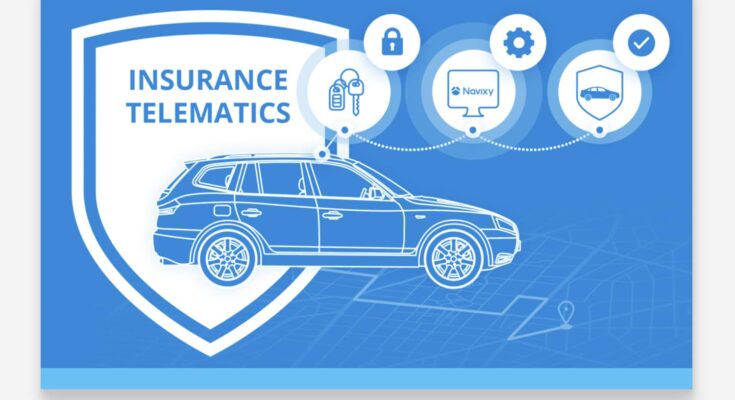Introduction
The future of auto insurance is being shaped by a technological revolution. Telematics and smart devices are leading this change, allowing insurance companies to offer more personalized policies based on real-time data. These advancements are not only transforming the way premiums are calculated but also improving the overall customer experience. In this post, we’ll explore how telematics and smart devices are reshaping the auto insurance industry and what this means for drivers.
What is Telematics?
Telematics refers to the use of technology to monitor and transmit data from a vehicle to a central system. This data can include information about the vehicle’s location, speed, braking patterns, and more. Telematics devices are typically installed in cars and can track driving behaviors in real-time. This data is then used by insurance companies to adjust premiums based on a driver’s actual behavior rather than traditional risk factors such as age, gender, or driving history.
Types of Telematics Devices
- Plug-in devices: These devices are plugged into a car’s OBD-II port, which is usually located beneath the dashboard. They are easy to install and can start transmitting data immediately.
- Built-in telematics systems: Some modern vehicles come with built-in telematics systems, such as OnStar or other manufacturer-specific platforms, that can send data directly to the insurance provider.
- Mobile apps: Many insurers now offer mobile apps that track driving behavior using the phone’s GPS, accelerometer, and other sensors to gather data on speed, braking, and miles driven.
How Telematics and Smart Devices Are Revolutionizing Auto Insurance
Personalized Pricing
Telematics allows insurers to personalize auto insurance pricing based on individual driving habits. By tracking data such as how frequently and how safely a driver operates their vehicle, insurers can determine a fairer premium based on actual risk rather than general statistics. For example, safe drivers who exhibit smooth braking and cautious acceleration may see their premiums drop, while higher-risk drivers who speed or frequently engage in hard braking may see an increase in their rates.
Rewarding Safe Drivers
Insurance companies are now able to reward safe driving behaviors. Many telematics programs offer discounts or rewards for drivers who demonstrate safe driving habits, such as:
- Smooth acceleration and braking
- Obeying speed limits
- Driving at safer times of day (e.g., avoiding nighttime driving)
By offering incentives for responsible driving, insurance companies aim to reduce overall risk and promote safer roads for everyone. These rewards can come in the form of lower premiums, cash-back offers, or loyalty points.
Real-Time Feedback
Smart devices can provide real-time feedback to drivers about their driving behavior. Through mobile apps or in-car systems, drivers can receive notifications and alerts when their driving habits need improvement. For example, a driver may be alerted if they are braking too hard or speeding, helping them adjust their behavior in the moment. This instant feedback can lead to safer driving and, over time, lower premiums.
Benefits of Telematics in Auto Insurance
Fairer Premiums
Telematics ensures that premiums reflect actual driving behavior rather than generalized risk factors. This is particularly beneficial for drivers who may be penalized under traditional models for reasons such as age or location but actually drive safely. By using data-driven insights, insurance companies can offer more equitable premiums.
Enhanced Claims Process
Telematics devices also help streamline the claims process. In the event of an accident, data from the telematics device can provide critical information about the circumstances surrounding the incident. For instance, the device may record the speed of the vehicle at the time of the crash, the force of the collision, and whether the driver was engaging in risky behavior. This data can help insurance adjusters assess the claim more accurately and efficiently, potentially leading to faster payouts.
Better Risk Management
By monitoring driving behavior, insurers gain a clearer picture of a driver’s risk profile. This allows them to tailor coverage more effectively, offering discounts to safe drivers and adjusting premiums for those who exhibit riskier habits. Over time, this can help insurance companies better predict and manage risk, leading to more stable pricing for customers.
The Impact of Smart Devices on Auto Insurance
Vehicle Diagnostics and Maintenance Alerts
Many modern vehicles come equipped with smart devices that monitor the car’s health and performance. These systems can alert drivers to potential issues such as low tire pressure, engine problems, or other maintenance needs. Insurance companies can partner with vehicle manufacturers to offer proactive solutions that help prevent accidents before they happen. By ensuring a car is well-maintained, the likelihood of breakdowns and accidents can be reduced, which in turn can lead to lower insurance premiums.
Integration with Other Services
The future of auto insurance will see further integration between telematics devices and other smart technologies. For example, partnerships between insurers and technology companies could lead to new services such as automated claims reporting or predictive maintenance alerts. Additionally, some insurers may offer bundled packages that integrate vehicle tracking with home or life insurance policies, creating more comprehensive and cost-effective solutions for customers.
The Role of Artificial Intelligence (AI)
Artificial intelligence is playing an increasingly important role in analyzing telematics data. AI can process vast amounts of driving behavior data and generate insights in real-time. This can help insurers predict the likelihood of accidents more accurately and provide more dynamic pricing models. AI can also be used to detect fraud by identifying inconsistencies in the data or patterns of behavior that are inconsistent with typical driving habits.
Privacy Concerns and Data Security
Data Collection and Privacy
While telematics offers many benefits, it also raises concerns about privacy. Telematics devices collect detailed information about a driver’s movements and behavior, which could potentially be accessed or misused if not properly secured. Drivers may be wary of sharing such personal data with insurance companies or third parties.
How Insurers Protect Your Data
To address privacy concerns, reputable insurers adhere to strict data security standards. Most companies ensure that personal data is anonymized and encrypted to prevent unauthorized access. Insurance providers also have transparent privacy policies that outline how data is used, stored, and protected. Drivers are usually given the option to opt-in or opt-out of certain types of data collection, giving them more control over their information.
The Future of Telematics in Auto Insurance
As technology continues to evolve, the role of telematics and smart devices in auto insurance will only grow. The future may see even more advanced systems that not only track driving behavior but also predict accidents before they happen or offer real-time insurance adjustments based on driving conditions. With the rise of autonomous vehicles and connected cars, the potential for innovation in this space is vast.
Conclusion
Telematics and smart devices are transforming the auto insurance industry by offering more personalized, data-driven solutions. These technologies allow insurers to calculate premiums based on actual driving behavior, rewarding safe drivers with lower rates and providing real-time feedback. As the industry embraces innovation, drivers can expect a future where auto insurance is fairer, more efficient, and better aligned with their driving habits. Whether you’re a low-mileage driver or someone who strives to improve your driving skills, telematics could be the key to unlocking significant savings and a safer driving experience.





